9 Butt-Lifting Exercises to Help Sculpt Your Glutes
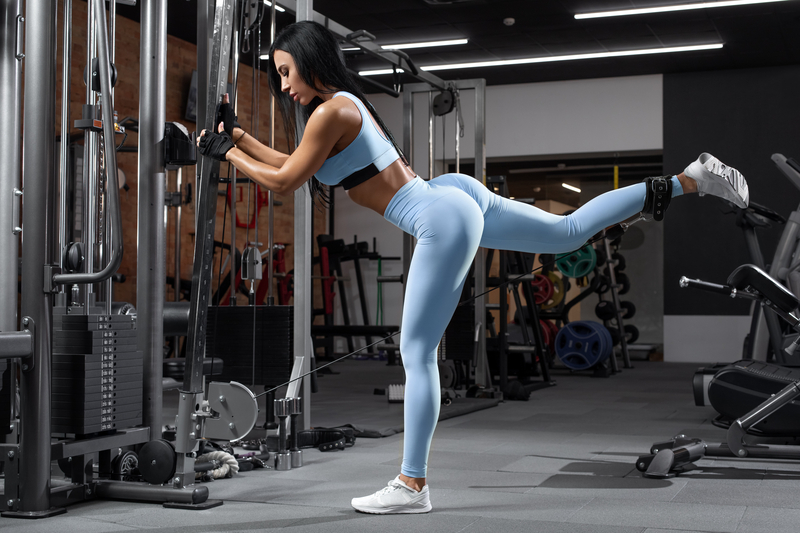
Booty, rear end, bum, seat, backside, buttocks, rump, cheeks, keester, derriere, fanny, duff, heinie, haunches, butt, buns, buttocks, tail, tush, behind, glutes, caboose, trunk… No matter what you call it, you’re going to want to make butt-lifting exercises part of your normal workout routine!
Not only does a nice-looking butt make you look and feel good about yourself, but a strong butt is essential for proper movement, posture, body alignment, power, and overall strength and speed.
What Muscles Make Up the Butt?
The buttocks are a little more complex than they may seem at first glance. Nothing says “in shape” like a nice, toned, rounded booty. Throughout history, the glutes have been a symbol of strength and health. But, beyond keeping your diet in check to ensure you don’t carry too much body fat in the area, there are three muscles you can work to help give you lift and shape to the area.
- Gluteus maximus—this is the largest muscle of the three that make up the buttocks. This muscle mainly moves the upper leg helping it extend and rotate.
- Gluteus minimus—this is, as the name suggests, the smallest of the glute muscles and is located deep within the buttocks. Its main functions include thigh abduction and rotation.
- Gluteus medius—this muscle runs along the outer portion of the glutes and assists mainly with hip movement.
Add These Butt-Lifting Exercises to Your Workout Plan
While a good deal of butt shape and size may stem from genetics, there are several exercises you can do to improve the size, shape, strength, and tone. Adding butt-lifting exercises to your gym routine can really help you transform what genetics gave you and help you maximize your gluteus muscles.
1. Body Squats
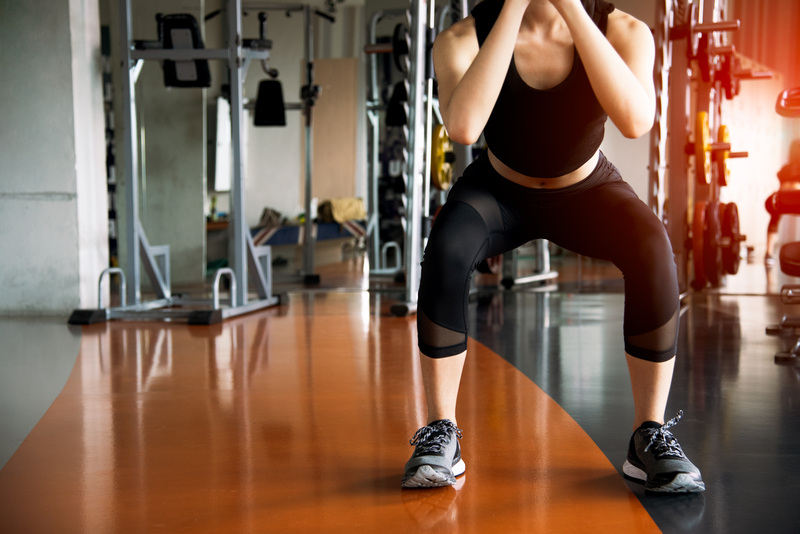
You knew this was going to be on the list of butt-lifting exercises, regardless. No matter which variation of squats you choose, including some form of squats in your leg routine is almost a necessity. You can start with the basic body squat. Simply stand with your feet about hip-width apart. Your toes should have a slight outward angle, and as you bend at the knees, ensure your knees track over your toes.
With your hands clasped in front of you, push your hips back and bend your legs until you can’t go down any further. Push up through your heels to straighten back up to the starting position and repeat.
2. Goblet Squats
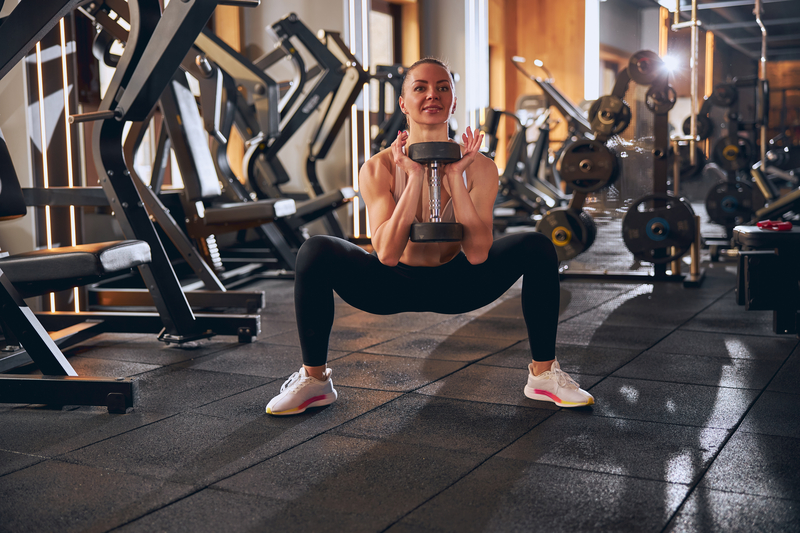
Start by holding a dumbbell by the end in front of you with both hands so that it hangs in a vertical position. Place your feet wide, outside of your hip and shoulder width, and point your toes out to the sides.
Next, push your hips back as you bend your knees, following the line of your feet and toes (out to the sides). Squat down as far as you can and then push back up through your heels until you reach a standing position again.
3. Lunges
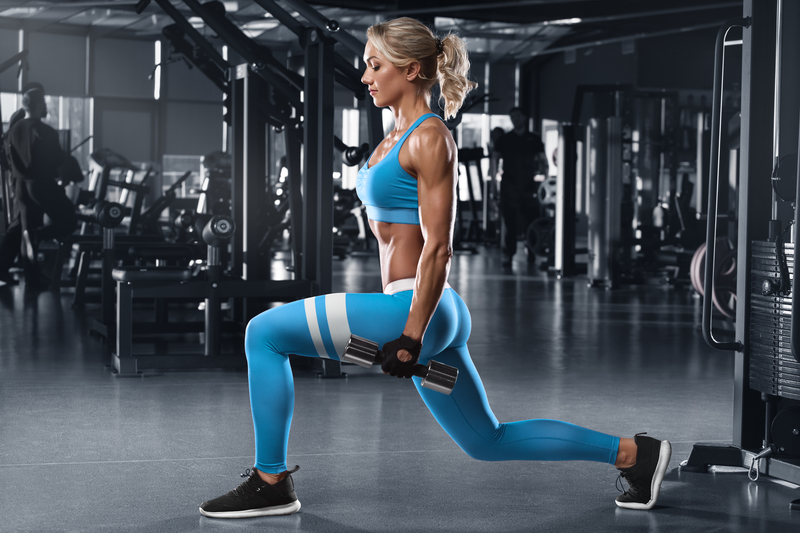
These are a tried-and-true exercise that will work the whole leg, including the glutes. Like the squat, there are many variations you can do. A good start is a regular forward lunge. Begin by standing with your feet about hip-width apart and place your hands on your hips.
Next, take a giant step forward with your right leg and bend at the knee until your thigh is about parallel with the ground. Get a good stretch through your glute area as you do this. Then, push up through your right heel to propel yourself up and forward to a standing position again, and bring your left leg up to meet your right. Repeat on the opposite side.
4. Glute Bridges
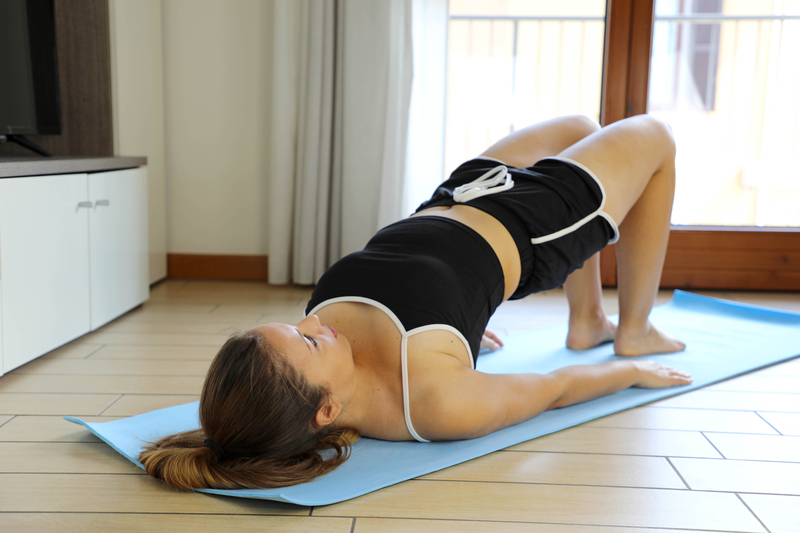
These can be performed with either both legs at once or as single-leg glute bridges. Start by lying on the floor with your arms straight by your sides, knees bent, and feet flat on the floor.
Next, use your legs to push into the ground and lift your hips up off the floor and press them up toward the ceiling. Squeeze all the muscles in your posterior chain as you do so and hold this position for a count of three. Return to the start and repeat.
If you decide to do single-legged glute bridges, simply lift one foot off the floor while you perform the movement and then repeat on the opposite side.
5. Cable Glute Kickbacks

These will get your glutes burning in no time. Using an ankle cuff, connect the cuff to the bottom of a cable machine. Next, grab the structure for balance and bend slightly forward at the hips as you kick your right leg straight up behind you, squeezing the glutes as you do so. Do ten repetitions to the back and then switch directions and do ten repetitions out to the side. Return to the start, switch legs, and repeat.
6. Kettlebell Swings
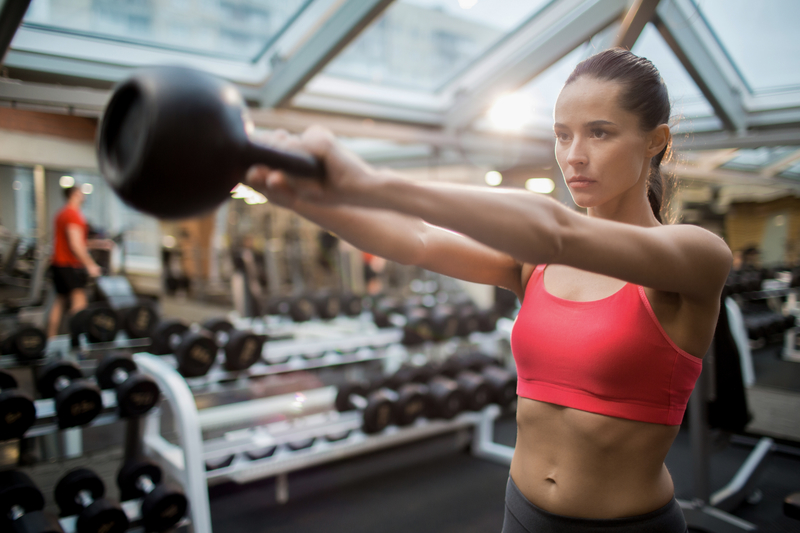
These swings will work a lot more than just your glutes, but your hips and glutes will be the primary movers. Start by standing with your feet wider than hip-width apart and hold a kettlebell in front of your body with both hands, arms straight. Push your hips back as you bend at the knees and swing the kettlebell between your legs and back. Next, swing the kettlebell forward and upward (straight arms) and thrust your hips forward and straighten your knees. Repeat the entire sequence ten times.
7. Donkey Kicks
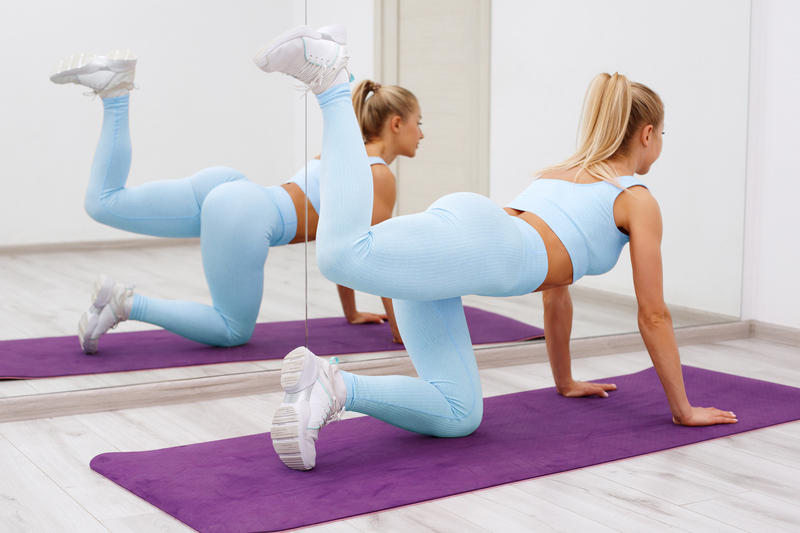
These can easily be done on a mat or even on the floor at home. Start on your hands and knees. Keeping your leg bent, raise your right knee off the ground and bring your thigh up until it is parallel with the ground. (You’ll need to squeeze both your glute muscles and your hamstrings to accomplish this.) Pulse upward in this position five times before returning to the starting position. Do five reps on the right before switching legs and repeating on the left.
8. Leg Press
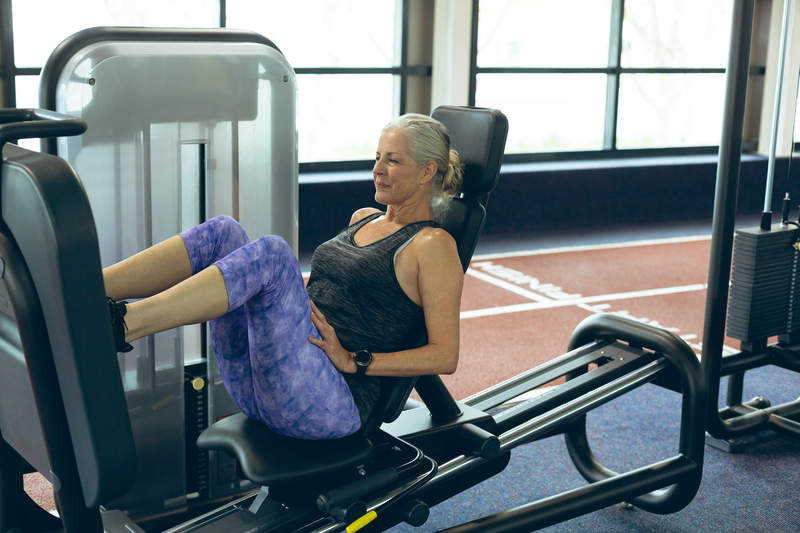
With your legs high and wide on the leg press platform, lower the weight until your knees are at (or slightly past) a 90-degree angle. As you push the weight back up, focus on squeezing your butt muscles to move the weight.
9. Hamstring Walkout
This exercise has you start in the same position as a glute bridge: on your back, hands by your sides, feet flat on the floor, your hips off the ground, torso in a straight line. Next, lift your right foot and place it one step forward, do the same with the left foot, and repeat, alternating sides, until your butt is almost touching the ground. Next, walk your feet back up to the starting position, rest, and repeat.




 US Doctor: "Eating This Every Day Can Snap You Into Ketosis"
US Doctor: "Eating This Every Day Can Snap You Into Ketosis"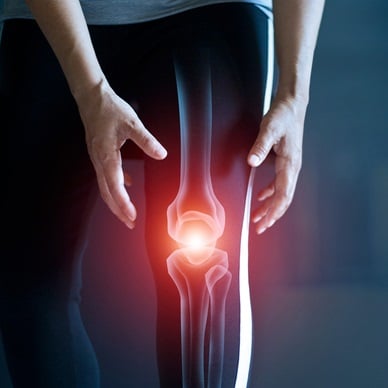 3 Key Nutrients to Help Lubricate Your "Tin Man" Joints
3 Key Nutrients to Help Lubricate Your "Tin Man" Joints AVOID Plant-Based Protein Powders (unless...)
AVOID Plant-Based Protein Powders (unless...)

